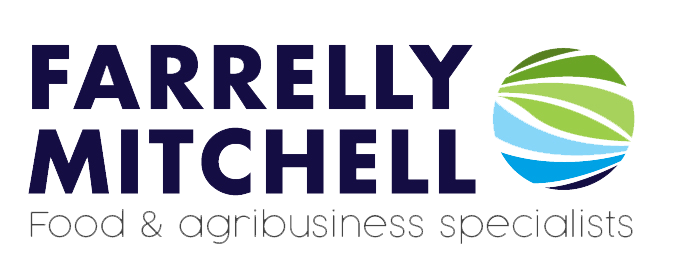The rapid digitalisation of agriculture is ushering in an era of enhanced productivity and efficiency. From precision farming to data-driven decision-making, digital technologies are transforming every aspect of the agricultural value chain. Critically, this transformation is also fundamentally reshaping the way value is created and captured by different stakeholders in the system.
As traditional players metamorphose into platform providers, agtech startups disrupt established business models, and big tech giants enter the fray, the competitive landscape is shifting in profound ways. This article explores the impacts of digitalisation on value creation and capture in the agricultural value chain, and the implications for suppliers, farmers, consumers, and policymakers.
Digitalisation and value creation in the agricultural value chain
At the heart of agriculture’s digital transformation is the rise of digital platforms. Traditional input suppliers and machinery manufacturers are increasingly morphing into platform providers, leveraging their domain expertise and customer relationships to offer a wide range of digital services. Many farm machinery providers and agri input suppliers now offer platforms that enable farmers to manage their equipment, analyse data, and connect with other service providers.
Alongside these incumbents, emerging agtech startups are offering innovative solutions in areas such as precision agriculture, crop monitoring, and supply chain traceability. These companies are harnessing advanced technologies like computer vision, machine learning, and robotics to optimise farm operations and increase yields. At the same time, big tech players like Microsoft, IBM, and Amazon are bringing their expertise in cloud computing, artificial intelligence, and IoT to bear on agricultural challenges.
This proliferation of digital platforms is transforming the four key dimensions of the agricultural value chain:
Activities: Farm operations are becoming increasingly data-driven and software-based. Sensors, drones, and smart equipment are generating vast amounts of data, which is analysed using advanced algorithms to optimise planting, fertilisation, irrigation, and harvesting decisions. This data-driven approach is enabling a shift from intuition-based to evidence-based farming. This is particularly pertinent for managing climate challenges. For example, in Egypt, drone technology has been transformational with irrigation optimisation in horticulture.
Flows: The flow of information in the agricultural value chain is becoming multidirectional and increasingly non-physical. Rather than a linear flow of products from suppliers to farmers, there is now a complex web of data flows between multiple actors. Farmers are sharing data with input suppliers, equipment manufacturers, and service providers, who in turn are providing insights and recommendations back to the farmers. Across the globe, standards and certification systems have been digitally enabled to ensure traceability from farm to fork, examples of which can be found in Ghanaian coffee to cocoa industry, as well as palm oil in Indonesia.
Actors: The roles of traditional actors in the agricultural value chain are evolving, while new entrants are disrupting established power structures. Input suppliers are becoming service providers, machinery manufacturers are becoming data platforms, and agtech startups are carving out new niches. This is leading to a blurring of industry boundaries and the emergence of an ecosystem with new forms of competition and collaboration.
Governance: The governance of the agricultural value chain is shifting from one-off transactions to continuous relationships, mediated by digital platforms. New rules around data ownership, access, and interoperability are emerging, as stakeholders grapple with the challenges of managing and monetising agricultural data. Regulation and enforcement have added transparency to value chains with the aim of ensuring fairness. For example, increasing regulation of water use and water scarcity in the middle east is driving adoption of wireless sensors for soil moisture and rainfall monitoring in Saudi Arabia and UAE.
Value capture implications for input suppliers
For input suppliers, the digitalisation of agriculture presents both opportunities and challenges. On the one hand, the rise of digital platforms allows them to offer a wider range of services and strengthen their customer relationships. By leveraging data from multiple sources, they can provide more targeted and personalised recommendations to farmers, helping them optimise their use of inputs and improve their yields.
On the other hand, the blurring of industry boundaries means that input suppliers are now competing not just with each other, but with players from adjacent domains. Machinery manufacturers, agtech startups, and big tech companies are all vying for a share of the value created by digital agriculture. To succeed in this global landscape, input suppliers need to develop new capabilities in areas such as data analytics, software development, and platform management.
They also need to be able to work with a wider range of partners and stakeholders, including competitors. The most successful input suppliers will be those that can position themselves as the farmer’s platform of choice, offering a seamless integration of products, services, and data. This will require a delicate balance of competition and collaboration, as well as a deep understanding of farmers’ evolving needs and preferences, as they seek to fulfil evolving consumer demand.
Value capture implications for farmers
For farmers, the digitalisation of agriculture holds the promise of significant productivity gains. By leveraging data-driven insights and precision farming techniques, they can optimise their use of inputs, reduce waste, and improve crop yields. Digital technologies can also help them manage risk, by providing early warning of pest and disease outbreaks, and enabling them to adapt to changing weather patterns. The use of controlled environment automation has been of strategic significance in vertical farming eg. leafy greens in Saudi Arabia.
However, realising these benefits depends on farmers being able to capture a fair share of the value created by digital agriculture. This is not a given, as the rise of digital platforms is creating new power imbalances in the agricultural value chain. Farmers may find themselves beholden to a small number of platform providers, who control access to critical data and services. They may also face high switching costs, if they become locked into proprietary systems and data formats.
To mitigate these risks, farmers need to develop their own data skills and capabilities. They need to be able to collect, manage, and analyse their own data, and to use it to make informed decisions. They also need to have access to a range of alternative platform options, to avoid becoming overly dependent on any one provider. This may require seeking professional advice, collaborating with other farmers, cooperatives, or industry associations to pool resources and negotiate better terms with platform providers.
Ultimately, the ability of farmers to capture value from digital agriculture will depend on the policy and regulatory frameworks that govern the use of agricultural data. Policymakers need to ensure that farmers retain control over their data, and that they can share it on fair and transparent terms. They also need to promote competition and prevent the emergence of dominant platforms that can extract excessive rents from farmers.
Policy and regulatory considerations
The digitalisation of agriculture raises a host of policy and regulatory challenges, which need to be addressed to ensure a fair and sustainable transition. One of the most pressing issues is data ownership and control. While farmers generate much of the data used in digital agriculture, they often have limited control over how it is used and shared. In some cases, they may even be required to surrender their data to input suppliers or machinery manufacturers as a condition of using their products or services.
To address this issue, policymakers need to establish clear rules around data ownership and access. They need to ensure that farmers have the right to control their own data, and to share it with third parties on their own terms. This may require the development of new data governance frameworks, such as data cooperatives or trust models, which give farmers greater bargaining power in their dealings with platform providers.
Another key issue is interoperability and data standards. The proliferation of digital platforms in agriculture has led to a fragmentation of data and systems, making it difficult for farmers to integrate and analyse data from multiple sources. To overcome this challenge, policymakers need to promote the development and adoption of open data standards and APIs, which enable seamless data exchange between different platforms and systems, while remaining mindful of the need for data and cyber security.
Finally, policymakers need to ensure that the digitalisation of agriculture does not lead to the emergence of new power imbalances and monopolies. They need to promote competition and prevent the abuse of market power by dominant platform providers. This may require the development of new anti-trust frameworks, which consider the unique characteristics of digital markets, particularly the influence of network effects and the power that comes from accumulating large amounts of data.
Future outlook and recommendations
Looking ahead, the digitalisation of agriculture is likely to continue apace, driven by advances in technology and artificial intelligence. However, the future of digital agriculture is not predetermined, and will depend on the choices, actions, and integrity of multiple stakeholders. As traditional suppliers transform into platform providers, new entrants disrupt established business models, and data becomes the new currency of competition, all stakeholders – from input suppliers, to farmers, to policymakers – will need to adapt and innovate. In global agri-food trade markets the potential to harness digital technology, by validating food systems, traceability, certification and standards, and therefore will address food security, fair share across the value chain, living incomes, and long-term sustainability.
Our value creation and capture experts
At Farrelly Mitchell, we believe that embracing digital technologies and supporting its integration among farmers and communities is key to building productive and sustainable food systems. With decades of industry experience and an extensive knowledge of agricultural technologies, our experts can assess the facilities and operations of any agribusiness and identify suitable solutions to improve productivity and efficiency. With the support of our agtech consultants, you can embrace innovation and digitalisation, build improved traceability systems, and ensure effective value creation and capture. Contact our team today to embrace change and position your business for growth.














